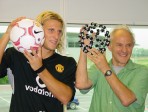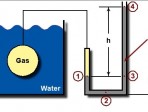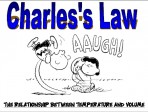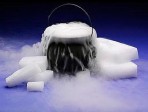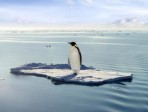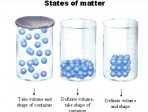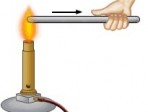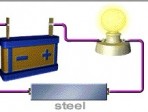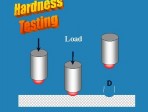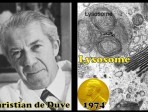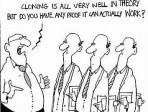 00:29:00
00:29:00
Cloning
Why is cloning such hot science? What are the potential benefits? And are there other ways of achieving them? What are stem cells, and why do many scientists say that embryonic cells are required for this work?
More details | Watch now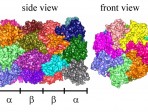 00:52:00
00:52:00
Bioscience and Nanotechnology – peptide assemblies
Toyo University Bio-Nanotechnology Symposium Lectures; Dr Woolfson talks on the self-assembly of peptides.
More details | Watch now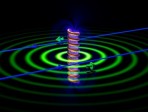 00:55:00
00:55:00
The Quantum World abserver by Electron Waves
Dr. Tonomura is a world renowned pioneer and authority in the field of electron holography, for which he has received many national and international recognitions. He is recognized for his contributions in the development of electron holography, the ....
More details | Watch now 00:11:00
00:11:00
A nano-sized gas sensor 1
A short Introduction to the Nano2Hybrid European Research Project. A video profiling a nanotechnology research project supported by a European Materials Research grant aims to produce a tiny gas sensor using nanotubes that have been developed to be s....
More details | Watch now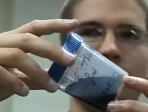 00:11:00
00:11:00
A nano-sized gas sensor 2 – Plasma treating nanotubes
The Namur group are heading up the nano2hybrids project. They are the specialists in plasma treatment of the carbon nanotubes to activate their surfaces, followed by putting down metal nanoparticles under vacuum. These are then sent to Spain to be ma....
More details | Watch now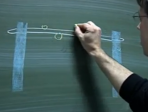 00:10:00
00:10:00
A nano-sized gas sensor 3
The Louvain-la-Neuve group are specialised in theoretical modelling at the atomic scale of the metal nanoparticles on the carbon nanotube surfaces, and in particular how electronic charge passes through the tubes in this case.
More details | Watch now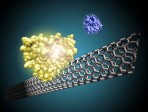 00:07:00
00:07:00
A nano-sized gas sensor 4
The ULB partner in the project are specialised in plasma surface treatment under air, rather than vacuum - it's the next step up in scaling up the plasma treatment of the nanotubes after the Namur group. In the earlier stages of the project they are ....
More details | Watch now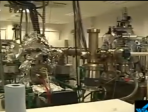 00:02:00
00:02:00
A nano-sized gas sensor 5
The CRPGL group is a newly formed lab in Luxembourg. Within the project their role is to start looking at 'scale up', plasma treatment at larger scales than is possible in the other labs, coupled with a battery of different sample testing techniques.
More details | Watch now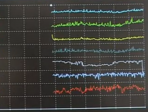 00:14:00
00:14:00
A nano-sized gas sensor 5
Institut des Materiaux, Nantes, France. The IMN group are specialists in computer modelling - in this case, of atomic defects and damage in the surface of the carbon nanotubes caused by the plasma treatment. What is the plasma doing to the nanotube s....
More details | Watch now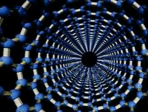 00:07:00
00:07:00
A nano-sized gas sensor 5
The Tarragona Group at University Rovira i Virgili are the experts in producing new prototype gas sensors. All the new metal particle treated nanotube samples from Belgium and Luxembourg make their way down to this beautiful corner of Spain, where th....
More details | Watch now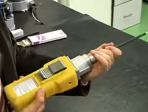 00:07:00
00:07:00
A nano-sized gas sensor 6
Sensotran are the industrial partner in the nano2hybrids project. A small family firm based just outside Barcelona in Spain, they are experts in commercial production of gas sensors for a range of industries, notably for detecting dangerous gases pro....
More details | Watch now 00:40:00
00:40:00
Joseph Rotblat 2
 00:37:00
00:37:00
Joseph Rotblat 1
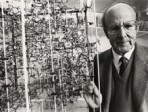 00:52:00
00:52:00
Max Perutz Interview – 2
The concluding part of an interview with the 1962 Nobel Laureate in Chemistry.
More details | Watch now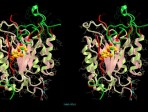 00:16:00
00:16:00
Jacques Monod
 00:08:00
00:08:00
Bucky Balls
The Buckyball, or C-60 molecule was discovered by accident (in the lab) while trying to understand the chemistry between the stars in the Interstellar Medium ISM. The discovery led to the Nobel Prize in chemistry in 1996. Here we look at the structur....
More details | Watch now 00:05:00
00:05:00
Light Beam
Light is reflected off a flexible shiny surface fixed to the end of a plastic tube. When one speaks into the tubes sound vibrations pass down the tube and make the surface vibrate. The reflected light is therefore sent off from the surface in a con....
More details | Watch now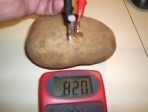 00:07:00
00:07:00
Potato Battery
When two different types of conductors are pushed into a potato chemical reactions take place charging them up - we have a simple electrochemical cell. A potato, zinc screw and carbon rod produce about 1V. We experiment joining a few of these cells u....
More details | Watch now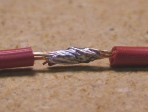 00:02:00
00:02:00
Soldering
This clip is about solder (a low melting point metal mixture) that can be melted using a hand-held soldering iron. The solder also has flux within it to help combat corrosion and produce a good solder joint to the components and circuitry.
More details | Watch now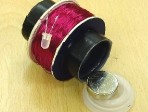 00:04:00
00:04:00
Shake-a-Gen
This is a simple yet effective demonstration of electricity generation. 500 turns of wire are wound onto a 35mm film can and the two ends are attached to an LED light. A strong magnet is placed in the can and the lid fixed back in place. The generato....
More details | Watch now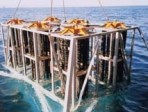 00:04:00
00:04:00
Seawater Battery
When two different metals are placed in a salt solution (an electrolyte) the chemistry produces a voltage. This is called a cell. By wiring up a number of these cells we can make a battery and use it to power electrical circuits.
More details | Watch now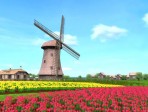 00:03:00
00:03:00
Three Windmills
Converting wind power into electricity seems like an ideal way of helping to solve our energy problems. However, the power generated by a windmill is dependent on the wind speed. If the wind drops to half its speed there is as little as an 1/8th of t....
More details | Watch now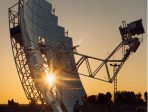 00:02:00
00:02:00
Parabolic Light Collectors
Parabolic surfaces can be used to concentrate energy for example to focus sunlight to heat things. Using an old World War II spot light mirror we demonstrate how easy it it is to concentrate enough energy to cause combustion. Finally, we show how to ....
More details | Watch now 00:45:00
00:45:00
Nesta Inspire Workshop
Harry Kroto and Jonathan Hare give a workshop at the University of Sussex to local school children and simultaneously video conference with children at Leicester, Imperial, Cardiff, and Edinburgh universities.
More details | Watch now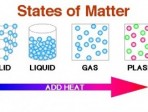 00:04:00
00:04:00
Temperature and States of Matter
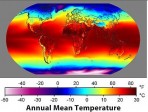 00:10:00
00:10:00
Temperature Scales
John Murrell explains scales and colour changes with temperature, boiling and melting,
More details | Watch now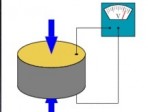 00:03:00
00:03:00
Piezoelectricity
Some minerals such as quartz can produce electricity simply by squeezing or bending them - these are called piezoelectric crystals. Here is a simple and cheap demonstration you can do.
More details | Watch now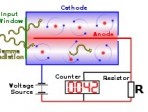 00:02:00
00:02:00
The Geiger Counter
Although essentially a very simple device the Gieger Counter is an exquisitely sensitive detector of ionising radiation. It can detect a single particle. Here we demonstrate its use in detecting radiation from minerals and describe in simple terms ho....
More details | Watch now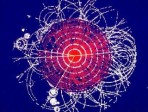 00:08:00
00:08:00
The Quest for The Higgs Particle
A Breathtaking Journey into the Innermost Structure of our Universe. Runner up: Best use of Animation and Best Short Documentary for the 2002 International Festival of Cinema and Technology.
More details | Watch now 00:25:00
00:25:00
Women in Nanotechnology
The Women in Nanotechnology project (WomenInNano) was a 3 year EU Research Project with the aim of finding out ways to support and encourage women working in Nanotechnology. In 2008 the Vega Science Trust was asked to make a short film documenting th....
More details | Watch now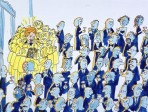 00:02:00
00:02:00
Hunting for Higgs – Why Build the Large Hadron Collider?
This short documentary explains why the Large Hadron Collider was built and what scientists are using the collider to look for.
More details | Watch now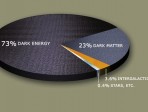 00:03:00
00:03:00
The Mystery of the Missing Mass
Dr Tara Shears explains why scientists are convinced that Dark Matter exists and how a new experiment called the Large Hadron Collider might finally tell us exactly what this mysterious missing mass is made of.
More details | Watch now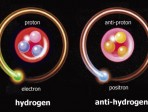 00:03:00
00:03:00
The Matter with AntiMatter
If equal amounts of matter and anitmatter were created at the birth of the universe then why does our universe seem to be made almost entirely from matter? Dr Tara Shears tells us how this mystery could be explained by the Large Hadron Collider exper....
More details | Watch now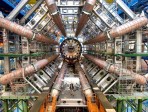 00:04:00
00:04:00
Big Bang – a tour of the Large Hadron Collider
Dr Brian Cox takes us on a tour of the Large Hadron Collider where the conditions moments after the Big Bang are to be recreated.
More details | Watch now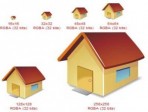 00:04:00
00:04:00
Sizing Things Up
Dr Tara Shears explains that one of Science's greatest achievements is to have accurately measured everything from the width of the universe to the diameter of a quark. This film features an animated zoom in from the universe to the heart of a hydrog....
More details | Watch now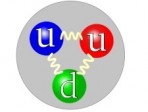 00:14:00
00:14:00
The Building Blocks of Matter
The Large Hadron Collider at CERN is the biggest science experiment ever built. Scientists from all over the world are heading to CERN with the aim of recreating particles from the beginning of the universe. Dr Brian Cox takes us on a scientific jour....
More details | Watch now 00:14:00
00:14:00
The Forces of Nature
Can everything that happens in the universe be explained in terms of just three forces? Particle Physicist Brian Cox talks us through the history of our scientific understanding, revealing why scientists have come to believe this. Brian explores the ....
More details | Watch now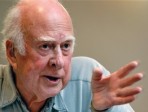 00:14:00
00:14:00
The Hunt for the Higgs
Particle physicist Brian Cox explains how quantum mechanics has changed the way that we think the world works and why it predicts the existence of a particle that has never been seen. The Higgs boson is a mysterious particle that explains why things ....
More details | Watch now 00:05:00
00:05:00
Giant Fullerenes
C-60, the football caged molecule is the head of a family of carbon based structures called the Fullerenes. In this presentation we ook at the larger structures, the giant fullerenes and among other things we will explore the 60n2 rule us....
More details | Watch now 00:59:00
00:59:00
Electron Waves Unveil The Microcosmos
Since the time of Faraday lines of force in space have been 'observed' by sprinkling iron filings around magnet. The lecturer explains how, with modern techniques we can 'see' lines of force inside a solid magnet. The studies reveal a fascinating dyn....
More details | Watch now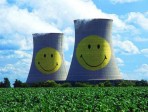 01:00:00
01:00:00
Nuclear Power Plant Safety – What’s the Problem?
A significant proportion of our electricity is generated by thermonuclear reactions. The dangers attached to these processes and the radioactive products are well known and publicised. Much less well known are the measures taken to ensure that the hi....
More details | Watch now 00:59:00
00:59:00
Science and Fine Art
David Bomford is Senior Restorer of Paintings at the National Gallery, London. There is a long tradition of applying scientific techniques to the study of works of art. This discourse reviews past and present approaches and shows that these advan....
More details | Watch now 00:53:00
00:53:00
Tick, Tick Pulsating Star: How we wonder what you are?
The discovery of pulsars, neutron stars which form when massive stars explode (supernovae), took astronomers by surprise. Their discovery is described and the way in which these bizarre objects have led to an understanding of matter under extreme con....
More details | Watch now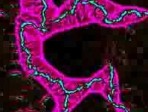 00:58:00
00:58:00
Self-Assembly: Nature’s way to do it
Biology operates at two levels: the large scale which we can see and the underlying microscopic one. The amazing way in which intermolecular forces cause protein arrays to self-assemble, enabling Nature to fabricate the large scale components of livi....
More details | Watch now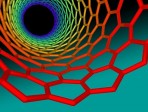 00:59:00
00:59:00
Nanotubes: The Materials of the 21st Century
Carbon nanotubes, some 1000 times smaller than conventional carbon fibers, have tensile strengths 100x that of steel and conduct electricity like metals. They promise a revolution in structural and electrical engineering.
More details | Watch now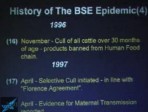 00:59:00
00:59:00
The Epidemic of Mad Cow Disease (BSE) in the UK
Roy discusses the disturbing events of the then (1997) recent history of the BSE epidemic and some of the crucial mistakes which contributed to the epidemic are highlighted.
More details | Watch now 00:59:00
00:59:00
MRI – A window on the human body
Nuclear magnetic resonance imaging (MRI) provides a powerful means of not only distinguishing between different types of tissue but also of identifying whether the tissues are normal or diseased.
More details | Watch now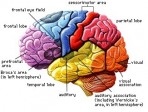 00:59:00
00:59:00
Nuts and Bolts of the Mind
Susan Greenfield conducts us on an exhilarating tour of brain. A brief fascinating historical introduction is followed by a discussion on our present, admittedly limited, understanding of this amazing organ. Members of the group handle (and dissect) ....
More details | Watch now 00:58:00
00:58:00
On the Air
Michael Garrett discusses the physical properties of gases and demonstrates how air is liquefied. Liquefied gases are a key resource for survival with an amazing range of applications and there are now few industries which are not in some way depende....
More details | Watch now 00:59:00
00:59:00
There Ain’t Nothing Nowhere
With his innate ability to explain the most abstract and complex concepts of modern physics in accessible terms David Miller convinces even the most sceptical that 'empty space' is teeming with a new cast of fundamental characters from virtual photon....
More details | Watch now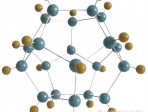 00:58:00
00:58:00
Architects of the Microcosmos
In thistalk Harry Kroto explains that molecules have structures that are every bit as real in the mind of the chemists who create them, as are the edifices of brick, steel and concrete designed by architects and built by engineers.
More details | Watch now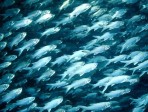 00:59:00
00:59:00
In the Oceans
Satellite, ship survey and computer modelling studies of the workings of the marine environment are used explore present fish supplies worldwide. The desperate need for global 'farming' strategies necessary to ensure that the Oceans can continue to p....
More details | Watch now 00:59:00
00:59:00
Electricity, Magnetism and the Body
The controlled ways that electricity and magnetism can stimulate the body are demonstrated and how the resulting responses can aid diagnosis discussed.
More details | Watch now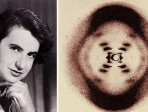 00:57:00
00:57:00
How X-rays cracked the structure of DNA
An elegantly simple optical diffraction demonstration with an inexpensive laser pointer is used to show the way in which x-rays can reveal the structure of crystals, and in particular, the double helix structure of DNA.
More details | Watch now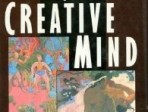 00:59:00
00:59:00
Creativity and Computers
The concept of creativity from the point of view of how original ideas develop is explored with the aid of recent advances in computer modelling programming strategies. Featuring some beautiful examples, Margaret addresses the question, can computers....
More details | Watch now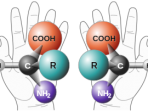 00:58:00
00:58:00
How to be Right and Wrong
Nobel Laureate Professor Sir John Cornforth, overcomes his deafness to present an elegant account of how he, and his wife Rita, disentangled a historically important puzzle in steroid synthesis.
More details | Watch now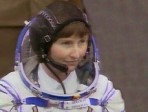 00:29:00
00:29:00
Life in Space
Helen Sharman, the UK's first astronaut, gives a vibrant account of her personal experience of life in space using models and film to illustrate the key scientific concepts involved in spaceflight. Among other things she discusses the way Newton's Th....
More details | Watch now 00:29:00
00:29:00
Flight in Birds and Aeroplanes
John Maynard Smith, one of our most eminent evolutionary biologists and scientific communicators originally trained as an engineer and spent the war years designing aircraft. He describes the way that flight developed in the animal kingdom. The fossi....
More details | Watch now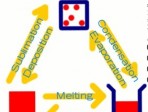 00:29:00
00:29:00
States of Matter
John Murrell discusses the basic physical principles relating to the gaseous, liquid and solid states with the aid of models and demonstrations. Attention is drawn to phase changes and subtle features involving intermediate phases such as liquid crys....
More details | Watch now 00:29:00
00:29:00
Bernal and the Social Function of Science
Chris Freeman, the founder and first director of the UK's Science Policy Research Unit introduces Bernal, the father of the protein crystallography techniques which enabled the double helix structure of DNA to be unravelled. Bernal's major impact on ....
More details | Watch now 00:35:00
00:35:00
Malaria
Professor of Tropical Public Health, Department of Immunology and Infectious Diseases at Harvard School of Public Health is one of the world?s experts on vector born infections such as malaria and dengue which constitute a heavy and increasing burden....
More details | Watch now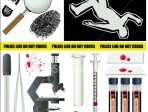 00:14:00
00:14:00
Computer Engineer
James, who describes himself as working in science engineering, software development, clothing design and psychology originally intended to go to University straight from school and then to go straight into working in industry but he got the opportun....
More details | Watch now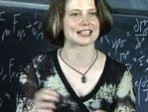 00:14:00
00:14:00
The Mathematician Who Can’t Add Up
Emma was a post-graduate student at the University of Nottingham, completing a PhD in the field of theoretical cosmology. As an undergraduate at the University of Sussex she made history when she became the first woman to win the top prize at the Sci....
More details | Watch now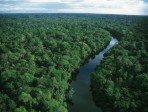 00:14:00
00:14:00
Environmental Scientist & Space Forester
Yadvinder works in the Geography department at Oxford University. He looks at how human activity and especially carbon dioxide emissions have changed the ecosystems of tropical rainforests. This work takes him on regular trips to his two research sit....
More details | Watch now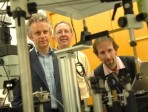 00:58:00
00:58:00
Spectroscopy and beyond
Professor Sir Richard Friend is Cavendish Professor of Physics and part of the Optoelectronics Group at the Cavendish Laboratory, University of Cambridge.His research interests cover: 1) Conjugated Polymers, in particular the development of new semic....
More details | Watch now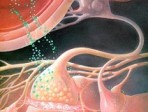 00:57:00
00:57:00
Pathophysiologist
In this video interview Gustav Born jokes that all his life he has been the son of a famous scientist (Max Born) and then later he became uncle to a famous film star (Olivia Newton John), he is also directly related to Martin Luther, Ben Elton and nu....
More details | Watch now 00:57:00
00:57:00
Overview of the Universe
An overview of the Universe and its component parts e.g. galaxies, stars, planets etc.
More details | Watch now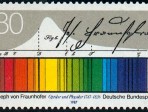 00:59:00
00:59:00
Introduction to atomic and molecular spectroscopy
An introduction to atomic and molecular spectroscopy, particularly rotational spectroscopy. Spectra from space.
More details | Watch now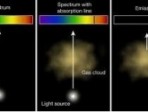 00:47:00
00:47:00
The spectra of atoms and molecules in space
The spectra of atoms and molecules in space: in nebulae, in the interstellar medium (ISM) , H 21cm radiation. The structure of our Milky Way Galaxy.
More details | Watch now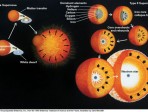 00:57:00
00:57:00
Origin of the Elements
Origin of the elements and the formation of molecules in the interstellar medium: Big Bang synthesis, stellar synthesis of He and C and other elements, interstellar scattering, interstellar species such as carbon monoxide and more complex molecules.
More details | Watch now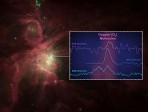 01:05:00
01:05:00
The Development of Molecular Radio Astronomy and IR Techniques
The development of molecular radio astronomy and infra red techniques and the information they yield on the composition of the interstellar medium: interstellar clouds, stellar envelopes etc.
More details | Watch now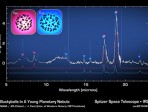 00:59:00
00:59:00
Optical (Electronic) Spectra From Space
Optical (electronic) spectra from space: comets. The detection of the pulsar in the Crab Nebula. The Three Degree Background. The detection by spectroscopy of the birth of stars.
More details | Watch now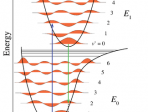 01:02:00
01:02:00
Electronic Spectroscopy and Franck Condon Factors
Electronic spectroscopy and Franck Condon factors. The discovery of the spectrum of H3+ in the laboratory and in the atmosphere of Jupiter. Interstellar chemistry: Ion molecule reactions in space, grain surface catalysed processes and reactions in ci....
More details | Watch now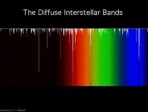 00:56:00
00:56:00
Radio Astronomy – Resolution Issues
Radio astronomy - resolution issues. The detection of long carbon chain molecules by radio astronomy. The conjectures on the origin of the chains in space and their possible relationship with the Diffuse Interstellar Bands that initiated the experime....
More details | Watch now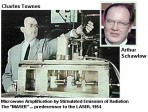 00:44:00
00:44:00
Masers and Lasers
Charles Hard Townes received the Nobel Prize for Phyiscs in 1964 'for fundamental work in the field of quantum electronics, which has led to the construction of oscillators and amplifiers based on the maser-laser principle' He was award half of the P....
More details | Watch now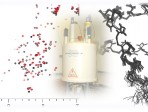 00:29:00
00:29:00
Nuclear magnetic resonance and macromolecules
Kurt Wurthrich was awarded a Nobel Prize in Chemistry in 2002 'for his development of nuclear magnetic resonance spectroscopy for determining the three-dimensional structure of biological macromolecules in solution' He now shares his life between his....
More details | Watch now 00:42:00
00:42:00
Atmospheric Chemistry
In this interview Sherwood Rowland talks about Ozone depletion and the effect of CFCs on Ozone and Global Warming (Greenhouse Warming where infrared radiation is trapped). He explains the chemistry of Ozone depletion and the history of what led to th....
More details | Watch now 00:42:00
00:42:00
Climate change
This presentation gives Rowland's current (2006) opinion/impression of Global Warming. He says that the first legislated discussion that he remembers in the US senate on the Global Warming was in 1986 and the looming problem and whether governments s....
More details | Watch now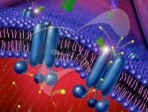 00:29:00
00:29:00
Structural and Mechanistic Studies of Ion Channels
In this interview MacKinnon, Nobel Prizewinner in Chemistry, 2003, discusses Max Perutz and then his own research. He says his course into science was quite sequacious and he really didn't start science until he was about 30 as he had a strong intere....
More details | Watch now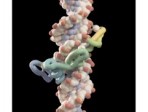 01:00:00
01:00:00
Crystallographic electron microscopy
Born in Lithuania, Aaron Klug, Nobel Prize in Chemistry, 1982, tells us about his early life and education growing up in Durban, South Africa. He developed an early interest in physiology and anatomy but did not find his teacher very inspiring and ga....
More details | Watch now 00:28:00
00:28:00
Extremely Fast Chemical Reactions
This interview starts with Eigen (Nobel Prize in Chemistry, 1967) talking about his early work for his PhD thesis on fast reactions and measuring the specific heat of heavy water. He says that light water had already been measured in classical chemis....
More details | Watch now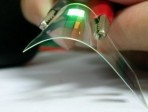 00:40:00
00:40:00
Discovery and development of conductive polymers.
Alan MacDiarmid was the first New Zealand born and educated Nobel Prize (Chemistry, 2000) winner since Maurice Wilkins in 1962. In this interview MacDiarmid talks about the science that he was awarded the Nobel Prize for, the discovery of the first c....
More details | Watch now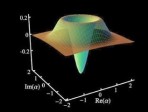 00:33:00
00:33:00
The Physics of Light
When asked how does he think about the problems of the physics of light, Glauber says that it is an off-shoot of particle physics. He says that he has mainly worked in nuclear physics, quantum electro-dynamics and the quantum theoretical version of M....
More details | Watch now